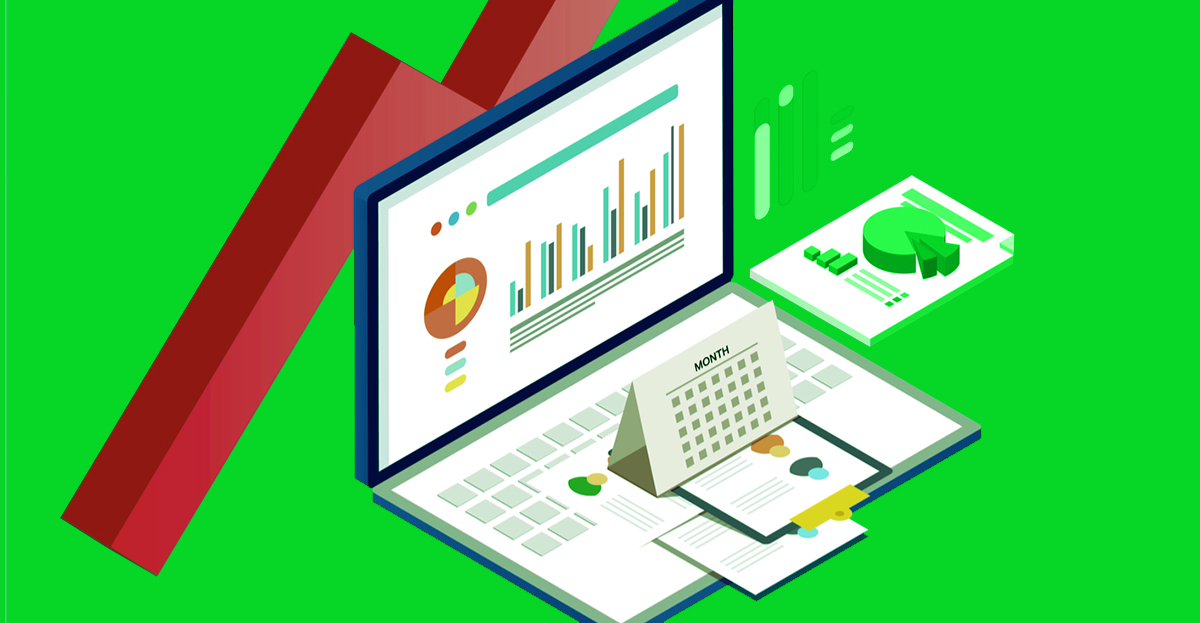Sales Development: What It Is, Why It Matters, And How To Do It Right Continue

The business case for sales development is built on flawless logic and verified by market data. It’s a lot better to sell to qualified prospects than to try your luck on a complete stranger.
The more time your closers spend taking moonshots, the less sales they actually make. That’s why the fastest growing B2B brands on the planet also run the largest and most sophisticated sales development teams in their class.
Here are key sales development concepts and tactics you should know about:
- What is sales development
- What does an SDR do?
- Sales development strategy
- Sales development process
- Sales development skills and salaries
- SDR versus Account Executive
- Sales development metrics and KPIs
- Tools and technology for sales development
- Sales development dos and don’ts
What is Sales Development?
Sales development is the field, process, or team that focuses on the early stages of the sales cycle.
This includes customer research, prospecting, initial engagement, lead qualification. Sales development teams identify the best prospects to connect with and assess which of these can be considered promising enough to vet into the official pipeline as Sales-Qualified Leads (SQLs).
Sales development originated in the 1980s, primarily in the B2B tech ecosystem. For players in this sector, revenue growth depended on sales force specialization.
Different teams owned different elements of the selling process such as lead generation, prospecting, nurturing, closing deals, and customer success. In many successful B2B companies, sales development has come to own the prospecting and lead qualification process.
Evolution of sales development
Over the years, sales development has evolved into an indispensable element common to most high-growth sales organizations. Without sales development, sellers’ efficiency would suffer, causing close rates and corporate revenues to plunge.
As relevant technologies advanced, sales development became even more powerful with data analytics software, real-time business intelligence services, auto dialers, call performance monitors, email tracking solutions, automated lead generators, and other sophisticated prospecting tools.
Today, some organizations have developed two distinct roles for business development and sales development. While these two roles have similar functions, they are different. Business developers are one step removed from the sales team, combining marketing and sales skills to generate leads for SDRs to work with.
What Does a Sales Development Practitioner Do?

Sales development reps (SDRs) perform only a subset of the functions commonly attributed to stereotypical sales professionals.
For one thing, SDRs do not need to close deals and are often exempt from traditional sales quotas. Hence, the favorite industry meme “Always be closing” applies only tangentially to sales development reps.
Instead, SDRs take lead generation and qualification very seriously. Instead of quotas, SDRs aim to beat a different set of activity and performance metrics.
Sales prospecting and lead qualification
Sales development reps are the go-to experts when it comes to finding potential clients, grading product-market fit, and keeping sales pipelines brimming with quality leads.
Often, SDRs manage the transition point between marketing and sales by further qualifying the marketing qualified leads (MQLs). By fulfilling their role, SDRs enable senior sales reps and account executives to close more deals faster.
Personalized email outreach and appointment setting
SDRs leverage all available channels to get the job done. They use the company’s CRM pretty much like a limb but they also probe the deep corners of social media to discover new prospects. After which they create highly personalized emails to make meaningful connections.
Following this, they clock dozens of calls in a day to make follow-ups and set appointments to accurately identify problems and determine whether any of their company’s solutions squarely address those problems.
To give you an idea of how the best sales development reps actually spend their day, here’s a real-life minute-by-minute coverage.
Sales Development Strategy

An organization’s sales development strategy greatly impacts its chances of meeting revenue targets and achieving growth. A winning sales development strategy covers three key elements: people, process, and technology.
The sales development strategy should focus on delivering high performance on relevant metrics that ultimately translate to higher topline figures. Thus including recruitment to training and even software adoption.
In many B2B organizations, sales development is closely aligned with marketing such that their respective strategies complement each other and coincide in many crucial touch points.
As buyers become more sophisticated, SDRs are compelled to adopt many marketing techniques such as video prospecting and context-based outreach.
Sales Development Process
As the business world radically transforms into a customer-centric landscape, the sales development process should similarly start with the buyer on spotlight. That means how a company establishes its ideal buyer personas (IBPs) and the benchmarks it uses to define a sales-qualified lead are of crucial importance.
Only after a qualified lead has been fully defined can a team start to develop the processes, tools, and the tactics that will comprise its sales development apparatus.
Steps in the sales development process
1) Identify what a sales qualified lead is, based on —
- demographic qualifiers (industry, location, company size)
- contact person’s specific role (authority) in the organization
- subject’s willingness to engage the sales team
- problem vs product fit
- budget (capability to purchase a solution or subscribe to a service)
- situational context or urgency (timeline)
2) Align sales and marketing efforts based on SQL definition
3) Establish process and assign roles for —
- Inbound (marketing-driven) leads
- Outbound leads (prospects belonging to a company’s total addressable market and who are discoverable by SDRs)
4) Engage lead via email, phone call, and other channels
5) Qualify lead’s likelihood of purchasing a product
6) Determine whether lead is worth pursuing —
- Ignore lead if resources required to sell outweigh potential value
- Vet lead into the sales pipeline as Sales Qualified Lead (SQL) if potential value justifies further allocation of resources
7) Hand over ownership of SQL to account executives
- Introduce SQL and account executive
- Set a meeting between SQL and account executive to move the customer journey forward
Sales Development Skills and Salaries
The SDR position represents the entry point for a career in tech sales. ServiceNow Senior Director Ralph Barsi outlines four key responsibilities SDRs need to fulfill:
- Research, identify, and prospect for new clients
- Make lots of phone calls and send lots of emails
- Schedule quality appointments and meetings
- Create and develop new opportunities (add prospects to the pipeline)
For their efforts, SDRs enjoy an average salary of US$48 K according to Glassdoor, with experienced SDRs taking home as high as US$60 K to US$70 K.
Meanwhile, sales development reps employed by SaaS enterprises receive significantly higher salaries, starting from US$60 K (base) to as much as US$118 K, as reported by RingDNA.
Skills and traits of the best SDRs
- Product knowledge
- Customer-centricity
- Full awareness of the buyer journey
- Active listening
- Marketing communications (email, social media, voicemail, live phone calls)
- Objection handling
- Familiarity with sales software and lead generation tools
- Drive/Self-motivation
Sales Development Rep (SDR) vs. Account Executive (AE)
SDRs use all relevant tools and tactics to find prospects across the addressable market who match the company’s profile for a sales-qualified lead (SQL). They use phone, email, and social media messaging to spark conversations and set breakthrough appointments.
On the other hand, account executives lead the effort towards getting prospects to sign deals by adeptly performing demos and customizing solutions to prospects’ specific pain points. Account executives also partly own the responsibility to keep customers loyal to the brand through continuous engagement and value sharing.
SDR success is primarily assessed based on the number of qualified leads they funnel into the pipeline as well as the number of successful appointments they are able to schedule. On the other hand, AE success largely depends on the number of deals they close.
SalesLoft published a very useful infographic that clearly distinguishes the roles of SDRs and AEs.
Sales Development Metrics & KPIs
Different organizations adopt varying sets of sales development metrics and key performance indicators (KPIs) depending on their business models. However, sales development metrics generally fall under two main categories:
1. Activity/Operational
Tracks how efficiently SDR’s perform basic tasks and include the number of calls, emails, meetings, and qualified leads SDRs are able to deliver over a certain period of time.
2. Impact/Performance
Monitors the quality and outcome of an SDR’s contributions to the sales process and include the percentage of qualified leads that eventually become paying customers, the average deal size of these customers, and the average time it takes to transition these qualified leads from start to end of the sales cycle.
Useful metrics for sales development
- Number of outreach attempts per day/week/month: Tracks the number of emails, calls, and meetings SDRs make over a specific period of time.
- Open and response rates for outreach attempts: Monitors how often prospects open or respond to emails and voicemails.
- Number of SQLs per week/month: Monitors how many SQLs an SDR is able to vet in a given period.
- Number of calls per win: Tracks the number of calls it generally takes to orchestrate one successful deal.
- Number of SQLs per win: Tracks the quality of SQLs
- Average deal size per SQL: This metric determines whether sales development reps are vetting high- or low-value opportunities into the pipeline.
- SQL win rate: This metric monitors how many qualified opportunities are lost or won over time.
- Share of pipeline volume (number and deal size) sourced by SDRs: This metric monitors the relative contribution of SDRs to the organization’s potential output.
Tools & Technology for Sales Development
Technology is an SDR’s best friend. In fact, much of the tech stack for sales organizations address the needs of sales development reps.
Because many of the tasks SDRs need to perform, software automations represent a very welcome addition to the SDR’s tool kit. Particularly when it comes to email and call management. Advances in AI and machine learning have also made life much easier for SDRs improving their ability to find, engage, and qualify leads.
Top tools that SDRs use
Accent Accelerate
Sales professionals using Accent Accelerate gain complete visibility into the entire sales cycle. Opportunities, selling activities, and customer sentiment are some key elements here.
Bigtincan
Augmented by AI, this software provides real-time intelligence about prospects. It also recommends the best content to engage them with at every stage of the sales process.
CircleBack
CirlceBack helps SDRs organize all the contact information from their email, phone, and social media accounts into one enhanced address book. CircleBack can be integrated into CRMs.
Cognism
Fueled by automation machine learning, Cognism enables SDRs to accelerate prospecting activities. Thus making it easier to find and connect with the right prospects.
Datanyze
SDRs can use Datanyze to probe a prospect’s website to get a top-view picture of the technologies and services they use. This helps SDRs make smarter decisions on product fit.
Engagio
Engagio provides a clear view of an organization’s decision-making structure. SDRs can thus identify the best contact persons to engage.
Hoopla
SDRs and other members of the sales team can improve selling performance through Hoopla’s analytics, data visualizations, and gamification capabilities.
LeadGenius
This solution crunches real-time data to enable sales practitioners to locate and engage prospects better.
LevelEleven
LevelEleven leverages performance data to manage sales activities and promote positive sales behavior among SDRs and their peers.
LinkedIn Sales Navigator
Most enterprise decision-makers are on LinkedIn. LinkedIn Sales Navigator makes it easier for SDRs to spot and reach them.
Outreach
Because SDRs use email all the time, they’ll reap huge benefits from Outreach’s voice and email automation features. To save time, SDRs can also integrate Outreach into their CRM to log all their messaging activities.
Pipedrive
Smaller teams that prefer a leaner and more visual CRM can turn to Pipedrive to get complete awareness of their sales activities and goals.
Salesforce
CRM means Salesforce for many successful enterprises. This platform’s long-term dominance of the space allows it to enhance its feature set with a wide range of capabilities and integrations.
SalesLoft
This universal prospecting platform empowers SDRs to move the needle when it comes to the number of appointments, demos, and qualified leads they deliver.
Yesware
SDRs benefit from this tool’s prescriptive analytics, outreach automation, and insight-generating capabilities. Among other things, Yesware can glean prospect sentiment by tracking email open and response rates and other behavioral indicators.
Final Takeaways: Sales Development Do’s & Don’ts
Representing the typical stepping stone to an executive sales career, sales development might be the most activity-intensive role in a sales organization.
However, it’s also among the elements most crucial to the success of a profit-oriented B2B company. A sales force with a sagging pipeline of low-quality leads is heading towards oblivion. In contrast, an organization with a highly motivated and effective sales development team often always leads the pack.
Here are some final tips SDRs should consider to deliver excellent performance.
Do your math
Prospecting and lead generation is largely a numbers game. Improve your sales activity metrics by using technology and tactics that help drive SDR performance. Practice effective time management so you are always performing the right sales activity at the right time.
Do your homework
Numbers alone won’t cut it. Be the best at what you do by building skills, gaining top-notch product knowledge, and learning prospecting tricks from mentors.
Don’t take it personally
Selling is rarely a walk in the park. By sheer volume, the negatives may seem to outweigh the positives at any given time. However, the right outlook, behavior, and strategies will help you become better at engaging prospects and rolling with the punches.
Don’t lose focus
Selling has become a buyer-centric paradigm and focusing on prospects is a good tactic to adopt. Establishing the right buyer personas and ideal customer profiles at the onset will help your team make reliable product fit assessments later on.